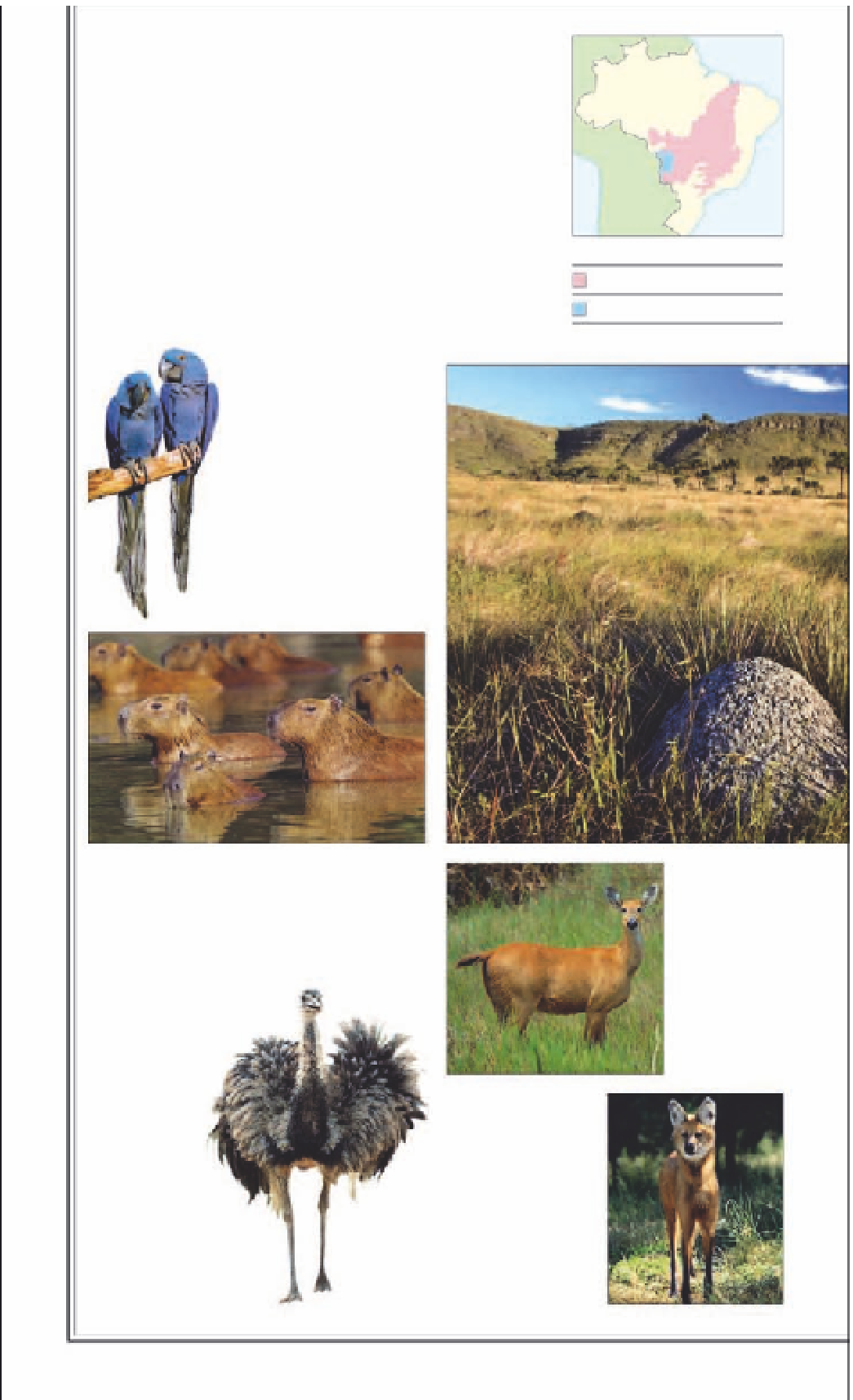Travel Reference
In-Depth Information
Flora & Fauna in the Cerrado
The Brazilian
cerrado
(meaning inaccessible in
Portuguese) is a biome unique to South America
and is the tropical world's largest woodland savanna.
The
cerrado
landscape is made up of scattered woods
and vast swathes of grassland along riverbanks and in
small valleys. One of the richest ecosystems in the
world, the
cerrado
is home to almost every species of
large mammal found in South America, together with
an enormously prolific birdllife. The
cerrado
land-
scape is home to some 10,000 plant species, of which
4,400 are endemic to the region.
KEY
The
cerrado
The Pantanal
Hyacinth macaws
are an
endangered species due
to overcollection for the
caged-bird trade. They
are also hunted by the
Kayapó people
(see p262)
,
who use their bright blue
feathers in their headdresses.
The cerrado
, a sprawling
1.2-million sq mile
(3-million sq km) mix of
forest and savanna, covers
75 percent of Brazil.
Capybaras
,
abundant in the
cerrado
, are
semi-aquatic, herbivorous rodents. They
live in herds and spend most of their time
feeding on riverbanks, where they are easily
spotted during mornings and evenings.
The marsh deer
is generally a
solitary ani-
mal, or lives
in herds of less
than six. It has
webbed feet
which help
it walk on
flooded land.
The rhea
is a large, flightless
bird native to South
America. Because
rheas will eat
almost any crop
plant, farmers
sometimes kill
the birds. This,
along with egg
gathering and
habitat loss, has led
to a significant
drop in their numbers.
The species is listed
among the wildlife of
“special concern.”
The maned wolf
is the
only large canid in the
world that does not form
packs. The animal, now
endangered, was hunted
by poachers for its body
parts, notably the eyes,
which were believed to
be good-luck charms.



































